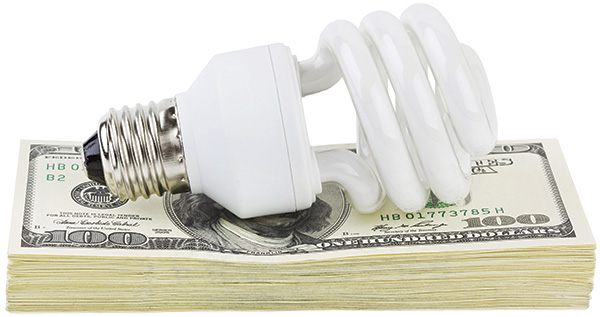
The steadily growing energy retrofit market, a segment of the construction industry that shows no sign of a slowdown, presents a unique set of opportunities and challenges for construction business owners. During the Great Recession, the energy retrofit market was a more stable source of work for some contractors, while new construction suffered a severe slump. As the economy continues to recover, the energy retrofit market is expected to maintain its growth curve.
Public- and private-sector owners of buildings and facilities will continue to take advantage of the financial and environmental benefits of retrofitting them with a variety of upgrades, including mechanical, electrical, lighting and windows. Among the benefits of the retrofit market are energy grants from utilities, tax credits and energy-savings streams that can be used to repay the funding of such renovations.
For many construction business owners, energy retrofit work presents an excellent opportunity—but not without risk. That’s because owners of buildings and facilities typically require a post- construction guarantee that the retrofit work will generate a certain level of annual energy savings, enabling the owner to recoup the investment or repay borrowed funds within a certain time frame. They also expect energy savings to continue long after the payback period.
Risk Management
This actually presents a challenge for the contractor, because owners want post- construction financial assurance that the energy savings will actually materialize during the life of the guarantee.
Ideally, the most valuable protection available to the project owner beyond the contractual one provided by the contractor would be to include the energy savings guarantee within the obligations covered by a performance bond. However, sureties desire to cover only the actual performance of the physical work (that it will be finished, that subcontractors and suppliers will be paid, etc.). The performance bond typically does not cover any long-term post-construction energy savings guarantees.
In order to secure the energy retrofit work, the contractor (and sometimes certain subcontractors working through the prime contractor) typically guarantees the owner a specific dollar amount of energy savings per year below the historical annual energy costs of the building prior to renovation. With those energy-cost savings, the owner can reasonably expect to completely recoup the cost of the renovation work in as few as five years or as many as 15 to 20 years.
If the energy-cost savings are less than promised during a particular year, the contractor can be obligated to pay the difference to the owner—and also fix the underlying problem that resulted in the energy-savings shortfall. If, for example, the contractor guarantees the owner $1 million in energy savings per year and the savings are only half of that in a particular year, the contractor is obligated to pay the owner the $500,000 difference. In short, energy retrofit work can be risky if things don’t go as planned.

Due Diligence
This risk requires that the contractor who performs the retrofit work do so only after completing in-depth due diligence. The contractor should closely analyze the current level of electricity, heating, water and other energy uses of an existing building or facility given its current size and occupancy and guarantee savings based only on an assumption of similar usage and occupancy following the renovation. That analysis will show that upgrades (i.e., new lighting fixtures, heating systems and low-flow sinks) will provide a certain annual savings that the contractor is confident will be realized.
After the work is performed, the construction business owner can also face another potential risk: the withholding of partial payment until the building owner is assured that the actual energy savings match the promises.
What's A Contractor To Do?
Certain insurance products have been developed to cover the risk of an energy-savings guarantee.
Typically, that insurance is written in one of two ways: underwritten on a job-by-job basis with an aggregate limit that covers individual projects approved by the underwriter and endorsed onto the policy, or under a blanket sublimit in a professional liability policy that covers all of the contractor’s energy retrofit work in a given year.
In both cases, the insurance company would pay a claim net of the deductible to the contractor or owner. Some owners may insist on the insurance coverage as an additional means of post-construction protection in the event that the savings fall short, but the contractor often purchases it for his or her protection. That helps mitigate tremendous risk for the contractor, particularly those with multiple energy retrofit projects for which they’re liable for the energy savings for many years.
Without the appropriate insurance, a significant energy-savings shortfall in one year could be a disaster; more than one shortfall could be fatal to the business. The coverage also helps mitigate the need for a contingent liability disclosure in the contractor’s financial statements.
Facts And Figures
Risk management will always be a critical consideration for construction business owners competing in the energy retrofit sector. Exact figures for the market’s current size are hard to come by, but, according to a McGraw-Hill Construction study, major retrofit and renovation comprised 64 percent of all construction projects in 2010. The market undoubtedly has grown since then.
One reason for the shift to retrofit and renovation—a steady increase that started in 2006, according to the McGraw-Hill study—was the dramatic reduction in credit availability for new construction during the economic downturn. A combination of factors has helped fuel the retrofit market since then, beyond owners’ concerns about energy costs and consumption. Those factors include enhancements in energy efficiency technologies, incentive programs and society’s increasing desire for energy efficiency and “green” buildings.
The majority of energy retrofit work is in the public sector, with growth coming at the state and local levels (cities, counties and school districts) in retrofits of office buildings, schools, hospitals and other facilities. Lighting improvements are the No. 1 form of energy retrofits, with heating and cooling and building automation controls not far behind.
Get Help
As construction business owners continue to assess the potential benefits of the growing market for energy retrofit work, they need a strategy to mitigate the potential financial risks before they plunge into retrofit work. Understandably, navigating the waters of ensuring against shortfalls in energy guarantees can be difficult for contractors who face these risks alone. But there’s a solution: Just as contractors rely on their attorneys for legal advice and CPAs for tax and accounting help, they should tap the expertise of their surety and insurance advisers if they decide to compete in the growing energy retrofit market. By doing so, they will have confidence that they have effectively managed their risks by choosing an insurance product that will protect them in the event of an energy-savings shortfall.
